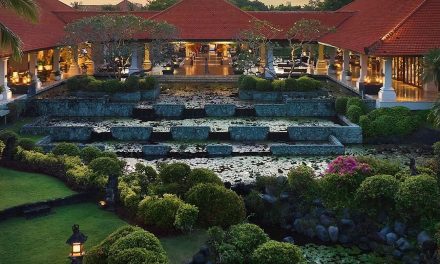Construction teams have recently provided updates on the ongoing Uluwatu Sea Wall project, sparking a mix of hope and concern among local residents and visitors alike.

Protecting the Iconic Uluwatu Temple
The initial vision for this controversial project was to conserve the stunning limestone cliffs surrounding Uluwatu Temple, mitigating issues like cracks, erosion, and potential collapses. However, many argue that the project has resulted in more adverse effects than benefits. As someone who has visited Uluwatu Temple – standing atop those majestic cliffs, feeling the wind and hearing the waves crash below – it’s hard to shake off the worry that such iconic beauty could be at risk.
Progress and Challenges in Construction
According to Anak Agung Rama Putra, the Head of Water Resources (SDA) from the PUPR Office of Badung Regency, the project is 83% complete, with a new completion target set for February 2025. He shared, “The current phase is focusing on the cliff area directly underneath Uluwatu Temple.” Seeing this construction evolve over time raises questions about what “completion” truly means for the site.
Technical Insights into Construction Work
Putra elaborated that the waves impact the project area from the south to the north. The ongoing work aims to mitigate this effect before proceeding with the revetment work. Notably, he mentioned that a 1-kilometer sea wall will ultimately encompass 392 meters still in progress due to shifting ground caused by wave impact. Practical solutions like installing tetrapods to absorb wave energy underline the complexity of this undertaking.
In practical terms, the placement of Tetrapod 138 and other reinforcement methods, including filling rock cavities and using shotcrete, shows the meticulous care being taken to bolster the cliff’s structure. As someone who has witnessed such engineering marvels up close, it’s impressive yet slightly intimidating to ponder the human effort involved in preserving nature’s grandeur.
Community Concerns and Environmental Impact
Despite the technical advancements, serious concerns loom over the project. Many locals have voiced their anxieties, particularly regarding the methods used to execute such significant operations. Just recently, footage surfaced showing parts of limestone cliffs, alarmingly closer to Uluwatu Temple, falling away. The temple itself is an irreplaceable treasure in Bali, and to see any section of its foundation eroding fills heart with unease.
The Bali Attorney General’s Office is currently investigating whether this project proceeded without a crucial environmental impact assessment (locally referred to as AMDAL). Furthermore, residents have expressed their disappointment over a lack of consultation before work began. As a traveler who values local perspectives, I believe community input can lead to better and more sustainable decisions.
Many have criticized the practice of dumping excavated materials into the ocean instead of transporting them away. This lack of oversight not only raises environmental red flags but also diminishes trust between the community and the authorities.
A Call for Transparency and Collaboration
As we continue to watch this project unfold, the essential takeaway is that while preserving our beautiful Uluwatu cliffs is necessary, it should not come at the expense of our environment or the voices of those who live here. Engaging the community, ensuring transparency, and prioritizing sustainability are essential conversations we must all be part of—after all, we all cherish Bali’s majestic beauty.
Have you visited Uluwatu Temple and seen the construction for yourself? What are your thoughts on balancing development and conservation? Let’s keep the dialogue open and seek the most harmonious solutions for our beloved Bali.






